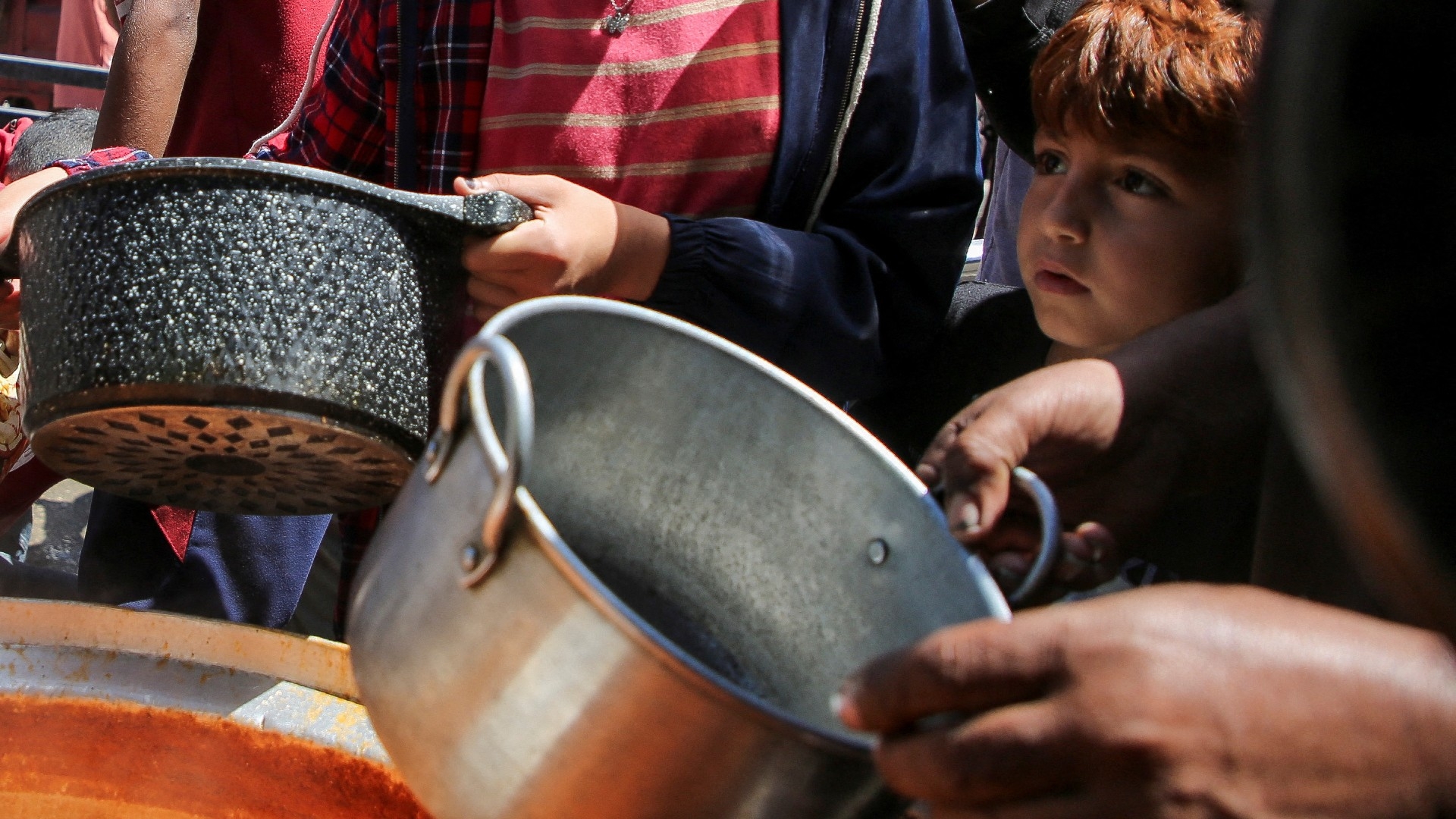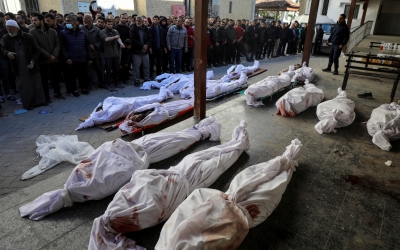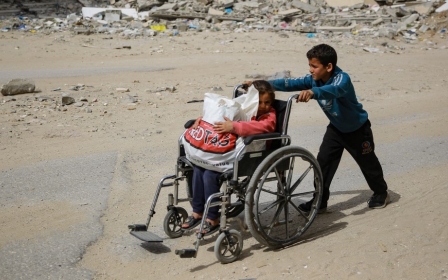People are starving to death in Gaza although famine not yet declared, says report

People in Gaza, including children, are dying due to hunger-related causes, regardless of whether famine thresholds have been hit or not, a new food security report has found.
The report, issued by an independent group of experts known as the Famine Early Warning Systems Network, or Fews Net, warned that it is possible Gaza has suffered famine since April, and this assessment is likely to continue until July at least, “if there is not a fundamental change in how food assistance is distributed and accessed” after it enters the Strip.
Meanwhile, Israel continues to block the Rafah crossing with Egypt and restrict aid entry via the Karem Shalom crossing with southern Gaza.
“The population’s access to and utilization of available food assistance has been insufficient to meet the level of need to date, and much more must be done immediately to ensure humanitarian food assistance is distributed effectively once it enters Gaza,” the report reads.
On Tuesday, UN Relief chief Martin Griffiths posted on X that in Gaza “delivering aid has become almost impossible". He called for an immediate reopening of all border crossings, and safe and unimpeded access.
New MEE newsletter: Jerusalem Dispatch
Sign up to get the latest insights and analysis on Israel-Palestine, alongside Turkey Unpacked and other MEE newsletters
The US-based Fews Net conducted its analysis on famine in Gaza based on three conditions that have to be met in one area, namely food consumption, acute malnutrition, and mortality.
It concluded that the high spike in death rates in the besieged enclave is directly linked to the “near” famine levels, and that “extremely high” rates of malnutrition among children will lead to severe physiological impacts.
Famine thresholds had, however, been reached in northern Gaza in April, it said.
‘Crisis’ in Gaza’s south
In southern Gaza, the report points to a “crisis”.
It says that the Israeli military offensive that started in early May has brought the “south into Emergency” and a “catastrophe” that will likely persist until July.
But still, the situation appears to be milder in the south, where the Fews Net report highlights that more food aid has been delivered than in the north.
'Until now, the available food supply in the south has been consistently higher than in the north'
– Fews Net report
“Until now, the available food supply in the south has been consistently higher than in the north, and food distribution reports in March and April suggested comparatively higher household access to food assistance,” the report said.
Data related to malnutrition also suggests that famine levels are well below the threshold.
However, the large-scale disruption of assistance in Rafah, and the displacement of some 800,000 people, could lead to a famine beyond July.
Fighting hinders research
The initial findings released by Fews Net have been reviewed by the Food Review Committee (FRC) of the Integrated Food Security Phase Classification (IPC), an external entity that accepts or rejects the preliminary conclusion of the Fews Net report.
The FRC said there was insufficient data to either confirm or deny the findings.

“The FRC does not find the FEWS NET analysis plausible given the uncertainty and lack of convergence of the supporting evidence employed in the analysis. Therefore, the FRC is unable to make a determination as to whether or not Famine (IPC Phase 5) thresholds have been passed in April,” the report says.
“Conflict and humanitarian access constraints” led to research block, the report said. But the final report points out to “available evidence and known information gaps”, and states that all three thresholds of famine are “possible”, if not likely.
The IPC does not gather data. It relies instead on humanitarian partners on the ground to produce information regarding food security, nutrition, mortality and calorie intake.
The IPC then analyses this data and evaluates it against a five-phase metric, with phase three constituting a food crisis, four an emergency, and five a "catastrophe" or famine.
On 29 May, Palestinian NGOs and professional unions declared that the besieged Gaza Strip is now a "famine-stricken zone", at a conference held in Ramallah by Amjad Shawa, director of the Palestinian NGOs Network (PNGO) in Deir el-Balah.
He said the deteriorating situation in Gaza is made worse by the “ruthless, merciless bombardment by the Israeli warplanes”.
The head of Gaza’s media office, Salama Marouf, has also said the threat of famine has returned to northern Gaza as Israel continues to restrict the entry of aid from all crossings. He added that relief efforts remain well below the minimum needs.
Middle East Eye delivers independent and unrivalled coverage and analysis of the Middle East, North Africa and beyond. To learn more about republishing this content and the associated fees, please fill out this form. More about MEE can be found here.




